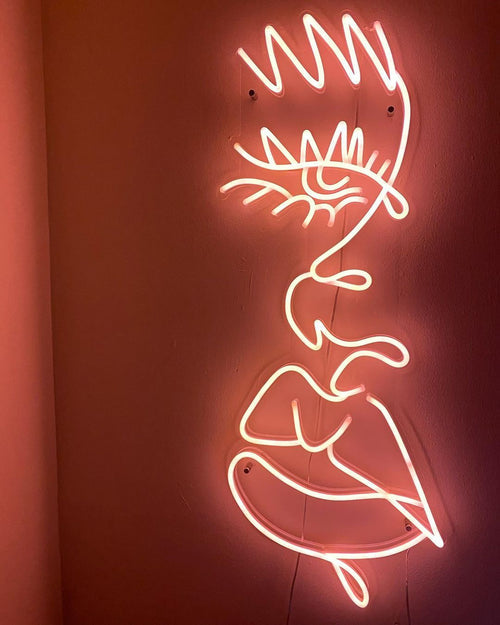In today's competitive market, effective communication is essential for any business looking to thrive. One of the most impactful ways to capture attention and convey messages is through customized LED signs. These signs offer vibrant visuals, dynamic displays, and the flexibility to update content frequently. This guide delves into the various aspects of customizing LED signs, exploring their benefits, design considerations, types, and best practices to ensure they serve as effective marketing tools.
1. Understanding the Importance of LED Signs
Customized LED signs have become increasingly popular due to their energy efficiency, longevity, and versatility. They can be used for a variety of purposes, including advertising, branding, and providing information. Businesses can use these signs to showcase promotions, events, or essential messages that engage potential customers and enhance brand visibility.
The key benefits of LED signs include:

- Attention-Grabbing: The brightness and motion of LED signs easily attract the eyes of passersby, ensuring that the messages are seen.
- Cost-Effective: Though the initial investment may be higher than traditional signage, LED signs consume less energy and have lower maintenance costs over time.
- Dynamic Content: Unlike static signs, LED signs can display changing content, making them ideal for promotions and special events.
- Weather Resistance: Most customized LED signs are designed to withstand various weather conditions, ensuring durability and reliability.
2. Assessing Your Business Needs
Before diving into customization, businesses must assess their specific needs. Consider the following factors:
- Target Audience: Understanding the demographics and preferences of your target audience will guide the design and messaging of your sign.
- Location: The placement of the sign is crucial. A well-placed sign in a high-traffic area will garner more visibility.
- Purpose: Define the primary goal of the sign. Is it to promote a special offer, provide directions, or enhance brand recognition?
3. Designing Your LED Sign
The design of an LED sign is critical to its effectiveness. Here are key design elements to consider:
- Color Schemes: Colors evoke emotions and can significantly influence consumer behavior. Choose a color palette that aligns with your brand identity and is visually appealing.
- Fonts and Text Size: Ensure that the text is legible from a distance. Use simple fonts and large text sizes to enhance readability.
- Graphics and Images: Incorporating relevant graphics can help convey your message more effectively. Ensure that images are high quality and complementary to the text.
- Animation and Motion: Dynamic content, such as scrolling text or flashing images, can capture attention. However, it's essential to strike a balance; overly flashy signs can be distracting.
4. Types of LED Signs
There are several types of LED signs that businesses can customize:
- Message Centers: These are programmable signs that allow businesses to display text and graphics. They are perfect for sharing promotions or important announcements.
- Full-Color Displays: These signs can showcase a wide range of colors and graphics, ideal for businesses looking to create a more vibrant display.
- Directional Signs: These help guide customers to specific locations within a facility or complex, enhancing customer experience.
- Menu Boards: Commonly used in restaurants, these signs can display daily specials and menu items, making it easier for customers to make decisions.
5. Software and Technology
Selecting the right software for managing customized LED signs is vital for effective customization. Many LED sign manufacturers offer user-friendly software that enables businesses to:
- Create Content: Design and schedule content easily using templates or custom designs.
- Update Remotely: Cloud-based software allows businesses to change messages and graphics from anywhere, ensuring timely updates.
- Track Performance: Some software offers analytics to track how often messages are displayed and how well they resonate with audiences.
6. Compliance and Regulations
Before installing an LED sign, businesses must ensure compliance with local regulations. This includes:
- Permits: Check if a permit is required for your sign installation. Different municipalities have varying regulations regarding signage.
- Zoning Laws: Familiarize yourself with local zoning laws to determine where signs can be placed.
- Light Pollution Regulations: Ensure that your sign does not contribute to light pollution, which may disturb local wildlife and residents.
7. Installation and Maintenance
Proper installation and maintenance are crucial for maximizing the lifespan and effectiveness of customized LED signs. Consider these steps:
- Professional Installation: Hiring professionals for installation ensures that the sign is mounted securely and safely, adhering to local codes.
- Regular Maintenance: Schedule routine maintenance checks to ensure the sign is functioning correctly. This includes cleaning the sign, checking connections, and updating software.
8. Measuring Effectiveness
After implementing your customized LED sign, it’s essential to measure its effectiveness. Here are some methods to consider:
- Customer Feedback: Gather feedback from customers about their awareness of the sign and its content.
- Sales Data: Analyze sales data before and after the installation of the LED sign to assess any correlation with increased foot traffic or sales.
- Visual Engagement: Observe how often customers stop to look at the sign. This can be assessed through informal observations or by using foot traffic counting technology.
9. Case Studies and Examples
Looking at successful implementations can provide valuable insights. For instance, a local coffee shop used a colorful LED sign to advertise seasonal drinks, leading to a significant increase in sales during the promotional period. Another case involved a retail store that showcased daily deals on an LED message center, which helped in boosting customer engagement and foot traffic.
10. Conclusion
In conclusion, customizing LED signs presents businesses with an effective way to enhance their branding and communicate with customers. By understanding their needs, designing eye-catching content, complying with regulations, and measuring effectiveness, businesses can create powerful signage that resonates with their audience. LED signs not only attract attention but also foster engagement and drive sales, making them an indispensable tool in modern marketing strategies.




